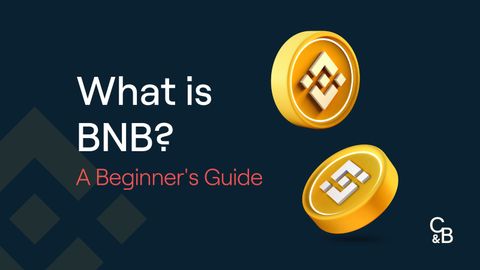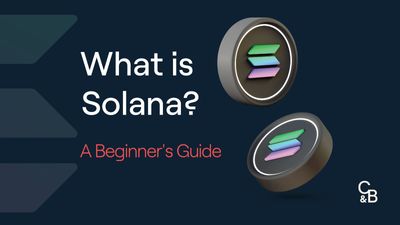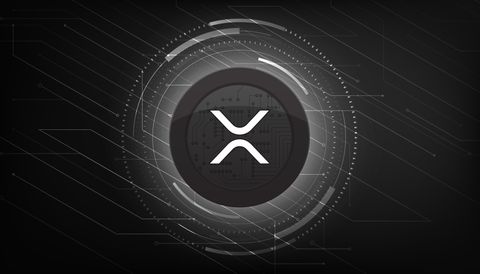There’s a whole world beyond Bitcoin.
Bitcoin remains the largest and most well-known digital asset, but it’s joined by thousands of other coins in the crypto ecosystem known as alternative coins or Altcoins.
Any coin other than bitcoin goes by this classification, from ETH to the likes of DOGE and XRP. Altcoins are an incredibly diverse space with a large number of coins presenting vastly different use cases to investors and holders.
According to Coingecko, almost 17,000 cryptocurrencies were in circulation as of June 2025. We’ve compiled a guide to the main types of altcoins and their varying functions. Keep reading below to learn more.
What Are Altcoins and Why do They Exist?
Altcoin is an umbrella term applied to any cryptocurrency other than Bitcoin. Given bitcoin’s dominance as the first-ever cryptocurrency, it currently accounts for over 65% of the entire crypto market cap. This is referred to as bitcoin dominance. The higher it is, the more BTC is likely to rally. When bitcoin dominance declines, it can be a sign that “altcoin season” is ready to begin, which is when altcoins make higher gains than bitcoin. In order for altcoin season to officially start, 75% of the top 50 cryptocurrencies need to perform better than bitcoin in the last 90 days.
Altcoins’ share of the total crypto market cap fluctuates based on wider market sentiment and whether the market is in bitcoin season or altcoin season. At the time of writing, Ethereum, the biggest altcoin, makes up just under 13% of the crypto market cap.

Although some altcoin projects share similarities with Bitcoin, many are completely different, ranging from their consensus mechanisms to use cases or a combination of both.
Some altcoins have been developed to address specific problems with unique functions, while others exist solely to rally and gather a community of investors and often speculators (particularly true for meme coins). The levels of adoption and network effects for each project vary based on technical factors, such as tokenomics, consensus mechanisms, institutional interest, where the coin is listed, and investor awareness.
Types of Altcoins and Their Use Cases
While there are thousands of altcoins in the market, many of them fall within six key categories: stablecoins, meme coins, utility tokens, play-to-earn tokens, governance tokens, and security tokens. An overview of each type of altcoin, along with examples of their use cases, is outlined below.
Stablecoins
As the name suggests, Stablecoins attempt to offer relative price stability. Their market value is usually pegged to the value of a stable asset, such as the US Dollar, US treasuries and government bonds, or gold.
Stablecoins’ design characteristics minimise price volatility by keeping the price as close to the value of the assets that back the crypto token. For example, Circle’s USDC is pegged to the US Dollar, and the price of 1 USDC should be equal to $US1.00 at any given time.
Typically, stablecoins are backed by a reserve asset, as is the case with USDC & USDT – both are backed by and redeemable against the US Dollar. Algorithmic stablecoins are also available, and their smart contracts constantly adjust the supply of the stablecoin to maintain a price as close to a peg as possible. Algorithmic stablecoins haven’t gained strong market dominance due to the collapse of the Terra Luna project, which highlighted the vulnerabilities present in stablecoins that aren’t backed by other assets.
In effect, stablecoins function like a fiat currency within a crypto space. They are often traded at high volumes, similar to cash in a traditional market, and are used as vehicles to park funds in crypto. It can be an effective way for traders to hold funds as a cryptocurrency, minimising the need to use fiat on- or off-ramps from an exchange while they wait for other investment opportunities. Further, as companies intensify their efforts to facilitate crypto spending, users may exchange their cryptocurrency for a stablecoin to use in everyday transactions, ranging from buying a coffee to paying for airfares. For example, Visa has been settling payments via stablecoins since 2023, enabling customers to transact with their stablecoin-linked cards at merchants that accept Visa payments.
Meme coins
Meme coins are cryptocurrencies inspired by the social currency of the internet: memes. They could be directly inspired by a meme, like the well-established dog-themed projects Dogecoin (DOGE) and Shiba Inu (SHIB). Others are inspired by the cultural zeitgeist, such as Pepe (PEPE) and Peanut the Squirrel (PNUT), two newer meme coins that experienced significant growth in 2024.
Anyone with an internet connection can create and distribute a meme. With the right technical knowledge, anyone can create and distribute a meme coin as well. A wave of celebrity-inspired or -endorsed coins has come and gone in the market, like these meme coins. Meme coins that gain popularity can often see exponential gains before rapidly selling off. For example, President Trump’s meme coin, $TRUMP, traded at an all-time high of US$73 on January 19, 2025, ahead of his inauguration. By late June 2025, it had declined 85% from its high, trading at just US$10.
Sometimes, it’s the projects with more humble or even random figureheads that see the greatest trading volume and interest, particularly dog-inspired meme coins. While meme coins may lack any value beyond a cultural ideal, those invested get the feeling that they're involved in something greater. This community of coin evangelists helps to grow or maintain interest in the asset through storytelling and social sharing.
Meme coins typically have a massive or unlimited supply, which accounts for their comparatively low per-unit price.
Utility Tokens
The function of utility tokens is to provide a service within a network. They could be used as a means to gain access to a service, facilitate transactions, or earn rewards. On the Ethereum network, for example, users can stake their ETH to become a validator and contribute to the secure and efficient running of the network.
Another utility token example is XRP. The token is designed to minimise the friction involved in cross-border transactions. Think of it as being able to send cash directly to someone overseas in a matter of seconds without the need for a bank or payment processor to handle the transaction.
Other examples of altcoins that operate as utility tokens are Theta Fuel (TFUEL). TFUEL is the operational token of the Theta Network — a peer-to-peer video streaming service. The coin enables users to transact on the network, as a “gas token” to pay for transaction fees, to incentivise users who share video streams on the network, and for governance and rewards. Similarly, MATIC, the native token of the Polygon network, has a variety of uses. It maintains network security through staking and is used as a gas token for transaction fees.
Investors usually buy utility tokens because they believe in the potential of the underlying project. In a way, the token’s price value reflects the value of the project, and current volume and usage on the network.
Play-to-Earn Tokens
This type of altcoin exists within the ecosystem of a game or network of games. Users who play the game can earn cryptocurrency rewards in the form of a native token. This can then be used to make in-game purchases (e.g. game-inspired NFTs), swapped into other cryptocurrencies or cashed out into fiat currencies.
Examples include Axie Infinity, a blockchain-based game where players can breed, raise, battle, and trade fantasy creatures called Axies. It operates on the Ethereum blockchain and is one of the most prominent examples of the "play-to-earn" gaming model.
Governance Tokens
Governance tokens give investors a say in how the project they are investing in is run. This democratised approach emphasises the decentralised nature of the project. Token owners not only use the protocol; they also own it and shape it. Decisions are not made through a top-down, centralised hierarchy. A community votes together on any major platform changes.
Governance tokens usually exist as part of a DAO, or “decentralised autonomous organisation”. DAOs are not run by one central figure. Instead, protocol users abide by rules written into the network's code via smart contracts.
The level of sway investors have in a project is usually proportional to the size of their holding. An example is Maker (MKR), which enables investors to vote on the operation of the MakerDAO platform that manages the DAI stablecoin. Users have their say on how the network will be run by locking their tokens to a smart contract. This differs from the proof-of-stake (PoS) protocol, where the validators’ voting power is weighted based on the amount of cryptocurrency they have staked on the network. Think of it similarly to a publicly traded company, where the majority shareholders hold the voting power.
Security Tokens
Security tokens are often seen as the cryptocurrency equivalent of traditional stocks, whereby investors are entitled to dividend payouts as a share of the platform’s earnings. Investors are attracted to these altcoins due to their value-generating properties, which are familiar to investors who already have exposure to or knowledge of the stock market. However, these tokens have been subject to regulatory scrutiny due to their profit distribution mechanisms. Regulators, such as the U.S. Securities and Exchange Commission (SEC), utilise traditional financial market legislation to determine whether a project’s tokens are classified as securities. The SEC, for example, uses the Howey Test, which defines an investment contract (the sale of a security) as:
- an investment of money
- in a common enterprise
- with an expectation of profit
- derived primarily from the actions of other people.
Examples of projects that issue security tokens include GMX are Synthetix. These decentralised trading platforms reward token holders with a cut of the fees generated through those trading on the platforms themselves.
Why Are Altcoins Important?
Altcoins provide alternative use cases and applications to bitcoin, which is largely seen as a store-of-value asset. As the cryptocurrency market matures, altcoins will continue to gain real-world utility beyond what’s described in this guide.
The various types of altcoins are important for several reasons.
- Stablecoins allow investors to easily access the decentralised finance (DeFi) market.
- Governance tokens give stakers a say in the direction of crypto projects.
- Play-to-earn tokens and meme coins enable communities to engage with and benefit from the crypto ecosystem, even if the network is designed solely for community building and entertainment.
Different use cases for altcoins are helping crypto adopters to understand that cryptocurrency is not limited to the utility of bitcoin or Ethereum.
Deciding What to Invest in
The cryptocurrency market is broad, and choosing what makes a worthwhile investment doesn’t mean you need to evaluate every project. You should consider a few key questions as you’re narrowing down a shortlist of investment options:
- What problem is the project solving? Or, what service does it provide?
- Is there utility?
- Is there support?
A coin may be performing well currently, but if it doesn’t have a long-term plan or is trading based on hype, it is unlikely to make a sound long-term investment. Take time to research the underlying project associated with a coin, checking what blockchain it’s on and the use cases for the coin.
It’s also important to compare the market cap of a coin with its fully diluted value. A large variance between these two figures can be a sign to conduct further research, as it may indicate that one or a small number of holders own a majority of the tokens, which can cause large price fluctuations if any large holders liquidate their tokens. It can also mean that large token unlocks could occur in the future, which can cause the value of a coin to decline.
On the technical side, you should conduct your own research to determine if there are numerous developers responsible for advancing the network. If developer support is dwindling or they’re moving to other projects, this can be a red flag. You can see developer numbers and trends by projects here.
Do the values of this project align with your values?
Ultimately, you want to see your investments grow. Within that, some investors might feel more inclined to invest their money in causes or projects they believe in and understand, rather than just seeking to profit alone. Think about your values. Are you eco-conscious? Are there any social causes that you already support? Chances are, there is a project out there that aligns with your principles.
What is the asset’s overall ranking?
The crypto market could change overnight, and a relatively unknown cryptocurrency could shoot up to the top 10 just from a tweet. Realistically, the top cryptocurrencies are ranked as such for a reason. Take a look at these projects and the value they offer to investors. It may provide you with some insight into the types of projects you should invest in across the broader cryptocurrency market.
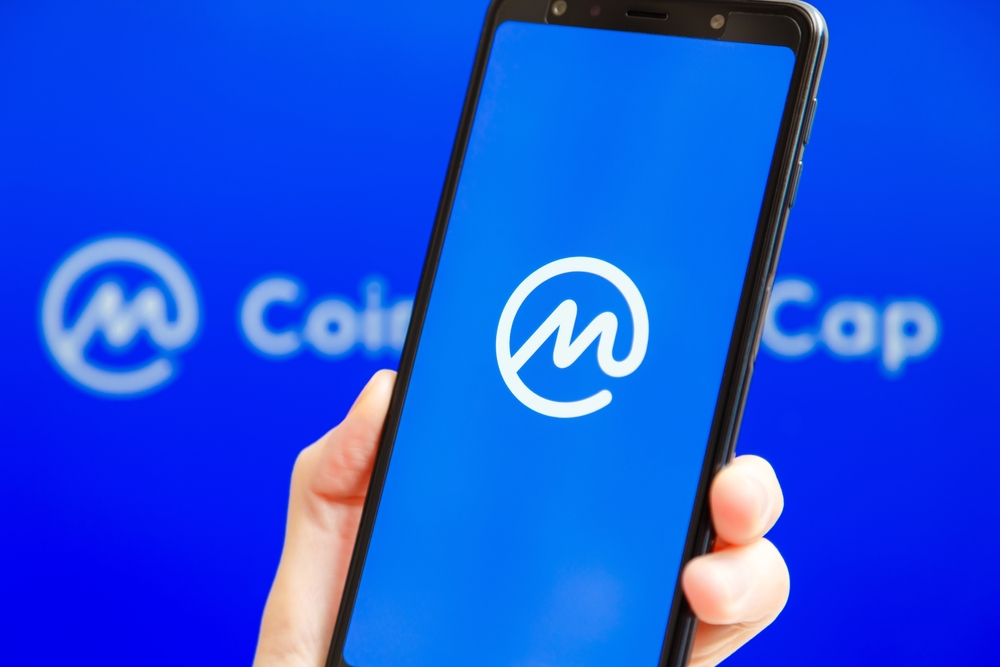
Read the project white paper
The white paper is a key document for all cryptocurrency projects. Without it, prospective investors wouldn’t be able understand a project and its goals.
While reading the white paper, highlight any red flags, such as a lack of real-world utility, legal issues, token emission models, or an anonymous team. You can also find summarised versions or informative articles covering the key points found in the white paper.
Price History
Even for seasoned traders, identifying historical trends can be challenging. But some of the original projects (e.g. Bitcoin) have a longer history that can be leveraged in your decision-making process.
Liquidity
Liquidity, or the ability to quickly convert an asset into cash or another asset without significant price fluctuations, is another factor to consider when investing. Larger-cap coins, such as bitcoin, Ethereum, XRP, and Solana, tend to be more liquid than smaller-cap coins.
In the case of stablecoins, their price remains (relatively) constant, so the growth potential is negligible. They are mainly used as a highly liquid trading pair and an entry point into decentralised finance (DeFi), as a daily currency, or for lending and borrowing.
Check Trading Volume
Volume is often used to gauge interest in a particular cryptocurrency. When assessing this measurement for an altcoin, weigh up the volume against a select time period. Trending coins may experience high trading volume one day but see a drop in trading once public interest wanes.
Volume can be measured in quantity – the number of units traded over a period of time or the cumulative dollar value of total volume over a given period.
Further Reading: How to Invest in Crypto
FAQs
Where can I buy altcoins?
Through an exchange (centralised or decentralised), or through a broker like Caleb & Brown. You may discover that certain altcoins are listed on different exchanges, which makes creating trading pairs extremely challenging. If you’re looking for access to multiple exchanges with institutional liquidity across a variety of cryptocurrencies, consider investing through a personal broker at Caleb & Brown.
What is the top altcoin by market cap today?
Ethereum is the top altcoin with a market cap of over US$295 billion at the time of writing.
What consensus mechanism do altcoins use?
The five main consensus mechanisms are Proof of Work (PoW) used by bitcoin, Proof of Stake (PoS) used by Ethereum 2.0, Delegated Proof of Stake (DPoS) used by EOS, Proof of Authority (PoA) used by VeChain, and Byzantine Fault Tolerance (BFT) used by XRP.
Dive Into the World of Altcoins with Caleb & Brown
Altcoins demonstrate how cryptocurrencies can be used and applied across various scenarios. They are building upon what bitcoin created, innovating, and iterating along the way.
Top Ten Altcoins Supported by Caleb & Brown (at July 1, 2025)
- Ethereum (ETH)
- Tether (USDT)
- XRP (XRP)
- Binance (BNB)
- Solana (SOL)
- USDC (USDC)
- TRON (TRX)
- Dogecoin (DOGE)
- Lido Staked Ether (STETH)
- Cardano (ADA)
View each altcoin's market cap by visiting CoinMarketCap.
If you’re ready to dive in and make your first altcoin purchase, Caleb & Brown is here to help. Trusted by thousands of investors across 100 countries, our dedicated team of experts works around the clock to carry out all your crypto trades.
We make investing in altcoins easy, allowing you to buy, swap and sell hundreds of altcoins for one low, transparent fee per transaction.
Get set up with a personal broker today, and you’ll receive a free security consultation, along with support to help you execute your first altcoin investment.
Disclaimer: This assessment does not consider your personal circumstances, and should not be construed as financial, legal or investment advice. These thoughts are ours only and should only be taken as educational by the reader. Under no circumstances do we make recommendation or assurance towards the views expressed in the blog-post. Past performance is not a reliable indicator of future results. The Company disclaims all duties and liabilities, including liability for negligence, for any loss or damage which is suffered or incurred by any person acting on any information provided.
from Caleb & Brown Cryptocurrency Brokerage.
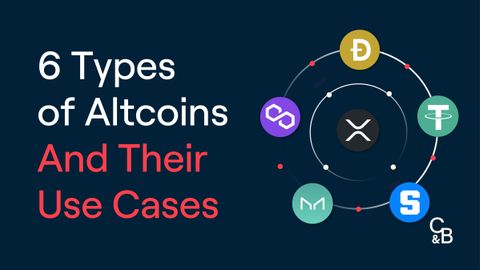
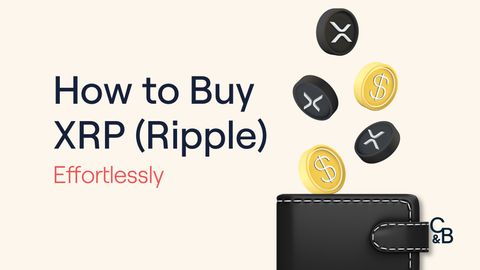
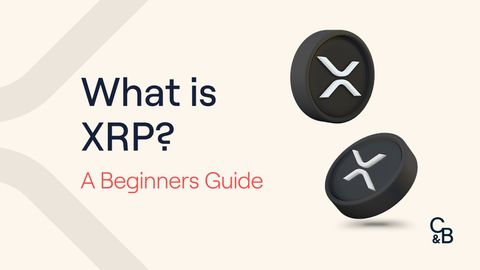
.png?u=https%3A%2F%2Fimages.ctfassets.net%2F4ua9vnmkuhzj%2F1PjLgWLIMUO2pzaZiPx5Dh%2F3348eab4e3ed605ef2edb43ec8e1f74f%2FBlog-Cover__15_.png&a=w%3D480%26h%3D270%26fm%3Dpng%26q%3D80&cd=2023-02-28T02%3A58%3A44.085Z)
